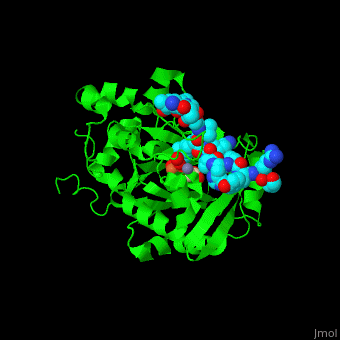SEE ALSO Lysine-specific histone demethylase
Function
- Jumonji domain-containing protein 2a (Jmjd2a) or KDM4A or Lysine-specific demethylase catalyzes the demethylation of trimethylated histone H3 at lysine residues 9 and 36 producing the dimethylated form. Jmjd2a domains contain: N-terminal, catalytic core (residues 1-350), 2 TUDOR domains which recognize dimethylated Arg (residues 895-1011) , 2 PHD-type zinc fingers and C-terminal domain. Jmjd2a is Fe+2 and α-ketoglutarate dependent. Methylation of histones in the chromatin is involved in regulation of gene activity, chromatin structure and epigenetic memory[1].
- Jumonji domain-containing protein 2b (Jmjd2b) or KDM4B and Jumonji domain-containing protein 2d (Jmjd2d) or KDM4D catalyze the demethylation of trimethylated histone H3 at lysine residues 9 producing the dimethylated form.
- Jumonji domain-containing protein 3 (Jmjd3) or KDM6B and Jumonji domain-containing protein 2d (Jmjd2d) or KDM4D catalyze the demethylation of trimethylated histone H3 at lysine residues 27 producing the dimethylated form[2].
- Jumonji domain-containing protein 5 (Jmjd5) or KDM8 and Jumonji domain-containing protein 6 (Jmjd6) function as histone demethylase and as a protein hydroxylase.
Disease
Jmjd6 serves as a receptor allowing the foot-and-mouth virus to infect cells[3].
Structural highlights
Jmjd2a uses and . An [4]. Water molecules shown as red spheres.
.
3D structures of jumonji domain-containing protein
Jumonji domain-containing protein 3D structures

